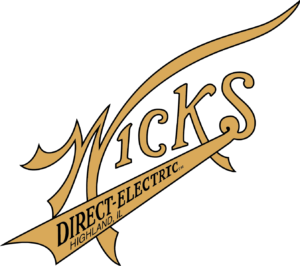Located in the rolling hills of Southern Missouri, just outside the small town of Gordonville resides a historic instrument at Zion United Methodist Church crafted by a long forgotten local builder. Its installation was documented by scratching a note into the side of the Swell Box which proclaims, “This organ was put in July 12, 1891 – Charles T. Bartels – Organist”.
The instrument was built by the Jackson Pipe Organ Company in nearby Chester, Illinois and has been in regular use since its installation 133 years ago. It’s one 58 note manual and 27 note pedal board control 7 ranks of pipework via tracker action.
8’ Diapason – Unenclosed. 1-19 comprise the stenciled façade.
2’ Fifteenth (enclosed)
4’ Principal (enclosed)
4’ Flute (enclosed) 1-12 from 4’ Principal, 13-25 Stopped Chimney, 26-58 Harmonic.
8’ Dulciana (enclosed) 1-12 from Melodia.
8’ Melodia (enclosed) 1-19 Stopped.
16’ Bourdon – Unenclosed.
The instrument enjoyed some major work in the early 1990s which had mixed results. The mechanism was overhauled, a new blower installed, and some repairs were made to pipework. However, the pitch of the instrument (A-445) was still a problem and rendered the instrument unable and/or difficult to be utilized with other instruments. Much of the pipework had sustained significant damage either by the passage of time or human intervention. The organ was in a somewhat sorry state.
It was discovered upon further examination after removal, that much of the organ is composed of previously enjoyed pipework. An amalgamation of pipe work of unknown heritage joined (somewhat haphazardly, one rank out of two unlike sets) together to create this instrument for Zion UMC.
We were contracted to restore and repitch the pipework to A=440. All the pipework was removed from the instrument in February 2024 and transported to our shop and is presently in the process of being repaired and repitched. Several pipes interspersed throughout the organ which were replacements for original damaged or missing pipes, are being replaced with new pipes of proper scale and construction. Dents, split seams, collapsed toes and extended pipe bodies to lower the pitch are well underway.
It was also desired to see the original stenciling of the 19 façade pipes restored to their original 1891 appearance. A thick coat of yellowed varnish coated each pipe and had to be carefully removed to expose the original color pallet. This portion of the project is supervised and directed by our staff artist Walker Ostler, with the assistance of Fritz Worley. Each pipe was documented and color matched to recreate the original treatment as closely possible. All stencils were traced and cataloged, with positions on each pipe measured and documented. The pipes were completely stripped of original finish and sent through the pipe shop for repairs. New stencils were cut and the process of repainting, reapplying stencils and gilding the 19 façade pipes commenced.
Reinstallation and final finishing of the restored pipework is loosely scheduled for middle to late April 2024.
